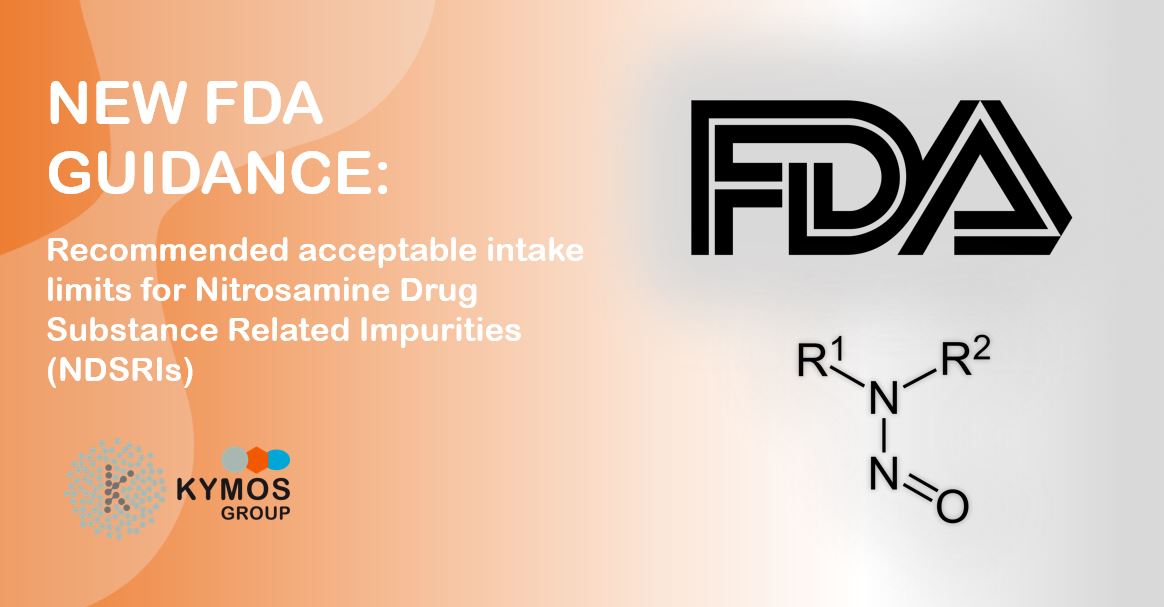
The US Food and Drug Administration (FDA) has taken a significant step to address the mutagenic and carcinogenic risk associated with Nitrosamine Drug Substance-Related Impurities (NDSRIs). This past August, the FDA introduced a final guidance framework that not only predicts the risks but also sets recommended acceptable intake (AI) limits for NDSRIs in drug products and active pharmaceutical ingredients (APIs). This crucial development aligns with the European Medicines Agency (EMA) and aims to enhance safety within the pharmaceutical industry.
Nitrosamines, particularly NDSRIs, have been a growing concern in the pharmaceutical industry due to their potential health risks. These impurities can form in drug products and APIs containing secondary amines or dimethyl tertiary amines. The FDA’s proactive approach aims to mitigate the risks associated with NDSRIs and ensure the safety of medications.
FDA’s Definitive Guidance on NDSRIs
This recent Guidance for Industry (GFI), titled “Recommended Acceptable Intake Limits for Nitrosamine Drug Substance-Related Impurities (NDSRIs),” is a pivotal development. The guide applies to a broad spectrum of pharmaceutical products, including APIs, over-the-counter (OTC) medications, and prescription drug products. It provides a structured methodology for determining AI limits and predicting carcinogenic potency categorization.
As we introduced before, this approach to addressing nitrosamine impurities completely aligns with the European Medicines Agency (EMA) and it ensures global consistency and coordination in mitigating the risks associated with NDSRIs, contributing to patient safety on an international scale.
A Three-Step Mitigation Strategy
The guidance outlines a three-step mitigation strategy that the FDA expects manufacturers and applicants to use when assessing NDSRIs:
- Conduct risk assessments for nitrosamines in APIs and drug products.
- Conduct confirmatory testing if risks are identified.
- Report changes implemented to prevent the presence of these impurities in APIs and drug products in approved and pending new drug applications (NDAs) and abbreviated new drug applications (ANDAs).
Predicting Carcinogenic Potency and AI Limits
The guidance introduces a methodology using predicted carcinogenic potency categorization to assign recommended AI limits to NDSRIs. This approach aligns with the ICH M7(R2) guideline, emphasizing the use of structure-activity relationship (SAR) concepts. AI limits are set to approximate an increased cancer risk of one additional case in 100,000 people over a lifetime. Table 1 in the guidance displays predicted carcinogenic potency categories and associated recommended AI limits, ranging from 26.5 ng/day (vs the 18ng/day of the EMA guideline) to 1500 ng/day.
The FDA also acknowledges the challenge posed by limited compound-specific data for NDSRIs. This lack of data has led to applicants conducting unnecessary studies or even discontinuing drug products from the market. Drug shortages have ensued, impacting patient access to medications. For that reason, the guide addresses these challenges and aims to strike a balance between safety assessments and uninterrupted drug supply.
Industry Obligations and Timelines
The FDA’s guidance lays out specific obligations for pharmaceutical manufacturers. Manufacturers of approved products are directed to evaluate nitrosamine risks within three months of the guidance’s publication (August 2023) and recommends completing these assessments by November 1, 2023.
Furthermore, manufacturers and applicants must ensure that any NDSRIs in their drug products meet the FDA-recommended AI limits and corresponding carcinogenic potency categories by August 1, 2025.
A Dedicated Webpage for Real-Time Updates
Besides starting strong and providing almost 250 recommended AI limits on its guidance, the FDA has also launched a dedicated webpage containing real-time information on acceptable intake limits for NDSRIs that may be at risk of forming in human drugs. The organization intends to periodically update this information, ensuring stakeholders have access to the latest data.
Conclusion
The FDA’s final guidance on nitrosamine impurities represents a milestone in the pharmaceutical industry’s journey towards enhanced safety and patient care. By addressing the challenges associated with NDSRIs and setting AI limits, the FDA and EMA are taking significant steps to protect public health. Pharmaceutical manufacturers, in collaboration with regulators, are now equipped to navigate these changes and provide safe and effective drug products to patients worldwide.
If you require assistance with nitrosamine impurities analysis, feel free to contact us here for expert support: https://kymos.com/contact/.

